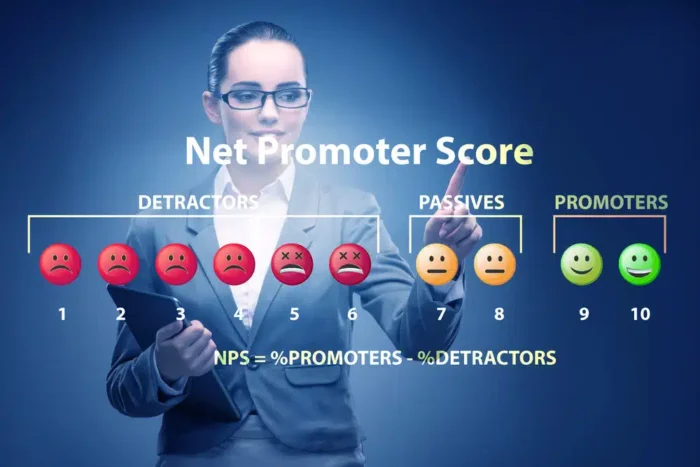
In the tech industry, customer service isn’t just a support function – it’s a key part of the product experience. Whether you’re delivering software, cloud infrastructure, or hardware, clients expect every interaction to be quick, clear, and tailored to their needs.
The stakes are high. If a client feels ignored or confused, they won’t just be disappointed; they’ll start looking at your competitors. That’s why the best tech companies treat customer service as a strategic priority, not an afterthought.
1. Personalize Every Interaction
When clients reach out, they don’t want to start from scratch, explaining their setup every time. They want to feel like you remember them — their systems, their previous issues, and even their business goals. This isn’t about inserting their name into a templated email; it’s about genuine continuity.
A support agent who says, “I see last time you were integrating this with your CRM — did that end up syncing correctly?” instantly builds trust. This kind of detail makes clients feel valued.
A few practical ways to do it:
- Keep client history easily accessible in your CRM so every agent can see past tickets, preferences, and system details.
- Make note of preferred communication styles — some clients appreciate in-depth explanations, others just want the solution.
- Follow up on past unresolved issues to show you’re paying attention.
When personalisation is consistent, clients start to see your service as an extension of their own team.

2. Make Transitions Seamless
In tech, service migrations — whether it’s moving a database, changing platforms, or shifting to a new version — are make-or-break moments. If they go badly, downtime and data loss can sour a relationship overnight.
This is why investing in professional data transfer management isn’t just about technology; it’s about client confidence. Guiding clients step-by-step through these transitions helps them feel in control, even if the technical work is complex.
Think in terms of stages:
- Pre-migration prep: Verify data integrity, back up everything, and confirm timelines with the client.
- During migration: Keep an open line of communication and update them on progress, even if it’s “everything’s on schedule.”
- Post-migration check-in: Confirm not only that the system is up, but that workflows are running smoothly.
When migrations are handled proactively, clients remember — and they’ll trust you with even bigger projects in the future.
3. Communicate Quickly, Clearly, and Consistently
Silence is one of the biggest frustrations for tech clients. Even if you don’t have a solution yet, a quick “We’re still investigating and here’s what’s next” keeps them from feeling abandoned.
Equally important is clarity. Some of your clients may be tech-savvy, but others could be business managers who need things explained without heavy jargon.
Good communication means:
- Setting realistic response times and sticking to them — not overpromising.
- Explaining the problem in plain, non-technical language so all stakeholders understand.
- Ending every update with clear next steps so the client knows exactly what will happen.
The goal is to make them feel informed without having to chase you for updates.

4. Offer Multiple Ways to Get Help
Clients have different preferences — and sometimes urgency changes their choice. A billing question might be fine for email, but an outage needs immediate attention.
The best customer service setups give clients options while ensuring they get routed to the right type of help.
An effective channel mix might look like:
- Live chat for quick fixes and urgent queries.
- Email for detailed or documented responses.
- Phone or video calls for complex, high-priority problems.
- Knowledge base or community forum for quick self-help.
By diversifying support channels, you not only meet clients where they are but also spread out the workload, reducing bottlenecks.
5. Train and Empower Your Support Team
A fast response means nothing if the person responding isn’t confident or informed. Tech clients can tell when they’re talking to someone who’s just reading a script.
Regular training ensures your team can handle both the technical and human sides of support — but empowerment is just as important. Give them the authority to make certain decisions without waiting for managerial approval.
Practical approaches:
- Hold post-update training sessions to keep everyone current.
- Run scenario role-plays to practice handling difficult or high-stress calls.
- Set clear escalation rules, but allow exceptions when urgent action is needed.
The result is a team that doesn’t just answer questions — they solve problems.

6. Be Proactive, Not Just Reactive
Solving problems is good. Preventing them is better. Tech companies that impress their clients often reach out before an issue occurs — whether that’s through system monitoring, usage reviews, or maintenance alerts.
Proactive support can include:
- Sending alerts about upcoming system changes and how to prepare.
- Flagging performance dips before they become outages.
- Offering quarterly account reviews to discuss usage trends and optimization.
Proactivity shows clients that you’re invested in their success, not just in putting out fires.
7. Listen, Gather Feedback, and Act on It
Feedback isn’t just for marketing purposes — it’s a core part of service improvement. If clients feel like their input disappears into a void, they’ll stop giving it. But when they see changes based on their suggestions, loyalty grows.
Ways to keep feedback meaningful:
- Send short, targeted surveys after major interactions.
- Use Net Promoter Score (NPS) to track satisfaction over time.
- Share “You asked, we did” updates to show real action was taken.
This loop of asking, acting, and informing turns clients into long-term advocates.

8. Build a Knowledge Base Clients Actually Use
A good knowledge base saves both your team and your clients time. But “good” means more than a list of articles — it should be searchable, easy to follow, and updated regularly.
Elements of an effective self-service hub:
- Clear titles that match the phrases clients actually search for.
- Step-by-step guides with screenshots or short videos.
- Revision dates so clients know the information is current.
The easier it is for them to help themselves, the more time your team has for complex issues.
Conclusion
Keeping tech clients happy isn’t about a single grand gesture — it’s the result of consistently delivering clear communication, smooth processes, and genuine care in every interaction. When your customer service is personalized, proactive, and backed by knowledgeable, empowered staff, clients begin to see you not just as a vendor, but as a trusted partner in their success.
In an industry where switching providers can be as easy as clicking a button, the companies that stand out are those that invest in long-term relationships. By adopting these practices, you’re not only solving today’s issues but also building the kind of trust and loyalty that ensures clients stay with you for years to come.














